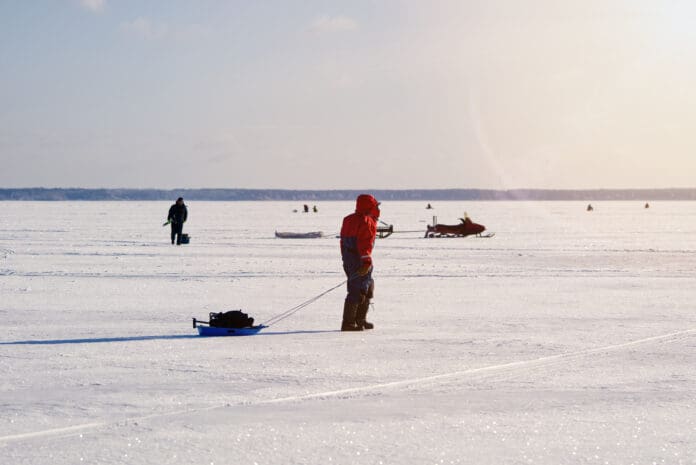MN DNR
The ice season got off to a quick start in parts of Minnesota in recent days, with ice forming on some water bodies and numerous reports of ice anglers already testing their luck. The Minnesota Department of Natural Resources reminds everyone to stay on shore until there are at least 4 inches of new, clear ice.
Ice conditions this time of year are highly variable and can change quickly. Falling into the cold water can turn tragic fast. Safety officials stress the importance of anyone heading onto the ice to check its thickness for themselves and not rely on other people’s footprints, tracks, or social media posts.
While 4 inches of new, clear ice is the minimum recommended thickness for walking, it takes at least 5 to 7 inches to hold a snowmobile or small all-terrain vehicle, 7 to 8 inches for a larger, side-by-side ATV, and 9 to 10 inches for a small car or SUV.
“The beginning of the ice season is always an exciting time for us hardy Minnesotans, but it also can be deadly if you don’t take the proper safety precautions,” said Col. Rodmen Smith, director of the DNR Enforcement Division. “Checking the ice thickness regularly – and for yourself – is absolutely vital and one of the easiest ways to ensure tragedy doesn’t strike when you’re out there.”
Each year, unexpected falls through thin ice lead to serious injury or death. Checking the ice thickness with a spud bar, auger or other device is the best way to prevent falling through. Wearing a life jacket is the best way to avert tragedy since the initial shock of falling into cold water can incapacitate even strong swimmers. A good set of ice picks can help someone get out of the water, and a cell phone, whistle, or other communication device makes it more likely a person can call for help.
General ice safety guidelines
No ice can ever be considered “safe ice,” but following these guidelines ( mndnr.gov/safety/ice/thickness.html) can help minimize the risk:
- Always wear a life jacket or float coat on the ice (except when in a vehicle).
- Carry ice picks, rope, an ice chisel, and a tape measure.
- Check ice thickness at regular intervals; conditions can change quickly.
- Bring a cell phone or personal locator beacon.
- Don’t go out alone; let someone know about trip plans and expected return time.
- Before heading out, inquire about conditions and known hazards with local experts.
- Parents and guardians should talk with their children and neighborhood children about staying away from the ice unless there’s adult supervision. This includes lakes and rivers, as well as neighborhood ponds, retention ponds, and anywhere ice forms.
For more information, visit the DNR’s ice safety webpage (mndnr.gov/icesafety) and the boating safety webpage (mndnr.gov/boatingsafety).








